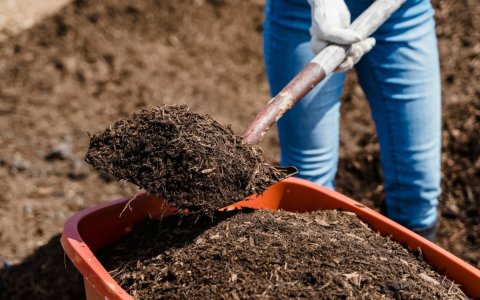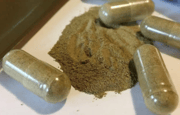From loved one to living earth: The rise of human composting in America
By
Veronica E.
- Replies 0
When most of us think about funeral arrangements, two options come to mind—burial or cremation.
But a new, eco-friendly alternative is starting to gain ground, offering a different way to say goodbye while giving back to the planet.
Human composting, or “natural organic reduction,” transforms a body into nutrient-rich soil that can help grow trees, gardens, and conservation spaces.
Once seen as unusual, it’s now legal in multiple states and is part of a larger movement toward greener, more personal end-of-life choices.
For some, it’s a deeply meaningful way to connect life, death, and nature in one lasting gesture.

A greener farewell
For generations, end-of-life decisions have been largely limited to burial or cremation.
But as environmental awareness grows, many Americans are asking if there’s a more sustainable option.
Human composting works by placing a body into a vessel with plant materials—such as wood chips, straw, and alfalfa—creating the right conditions for microbes to break it down into soil over several weeks.
Unlike burial, it avoids embalming chemicals, metal caskets, and large land use; and unlike cremation, it produces no carbon emissions from burning.
Also read: Are your tomatoes splitting? Here’s the real reason and what you can do about it
The states leading the change
Washington became the first state to legalize human composting in 2019, and twelve others—among them New York, California, Colorado, Minnesota, Maryland, and Georgia—have since followed.
Legislation is under consideration in at least 15 more states, from Texas to Massachusetts.
The process is tightly regulated, with only licensed facilities allowed to carry it out.
“You can’t do this in your backyard,” says Katrina Spade, founder of Recompose, a Seattle-based company specializing in the practice.
Also read: 24 minutes dead: A parent's near-death experience and what it taught her about life beyond!
How it works
The transformation takes about five to seven weeks, though some companies, like Return Home, use methods that shorten the active process to around 30 days, followed by a curing period.
The end result is roughly one cubic yard of rich topsoil—enough to fill the bed of a pickup truck—that can be donated to conservation projects, used in a family garden, or spread in a place that held meaning for the deceased.
Families may even decorate the vessel or spend time with their loved one during the process, making the experience more personal and connected.
Also read: A core family member’s death in The Simpsons finale leaves fans stunned—what it could mean for the future of the show
Support and criticism
Advocates see human composting as a way to minimize environmental impact while creating something beneficial.
Sarah Chavez of the Order of the Good Death notes that it can make funerals feel more meaningful, allowing families to participate and later keep the soil as a living reminder.
Not everyone agrees, however—some religious groups, including the US Conference of Catholic Bishops, say it does not meet their standards for respect for the dead.
Still, interest in green funeral options continues to grow, with public support rising steadily in recent years.
Also read: This silent killer is back? A second death raises concerns about the resurgence of a deadly infectious disease
A lasting gift to the planet
For people like Nina Schoen, who has already chosen human composting for herself, the decision is about giving back.
“Maybe the saved emissions aren’t huge, but I felt like this was a gesture,” she says.
“More dirt. More gardens. More life.”
As more states consider legalizing the practice, it’s changing the conversation about how we leave our mark—not in stone, but in soil.
As more Americans explore greener and more meaningful ways to say goodbye, human composting is emerging as both a practical and symbolic choice.
It allows people to leave behind something that fosters life, rather than leaving a lasting environmental impact.
Whether or not it’s the right option for you, it’s part of a growing conversation about how our final chapter can reflect the values we held in life.
Read next: Clinically dead for three minutes—his story will make you question everything

Would you ever consider human composting for yourself or a loved one, or does the idea feel too unfamiliar? Share your thoughts and experiences in the comments—we’d love to hear from you!
But a new, eco-friendly alternative is starting to gain ground, offering a different way to say goodbye while giving back to the planet.
Human composting, or “natural organic reduction,” transforms a body into nutrient-rich soil that can help grow trees, gardens, and conservation spaces.
Once seen as unusual, it’s now legal in multiple states and is part of a larger movement toward greener, more personal end-of-life choices.
For some, it’s a deeply meaningful way to connect life, death, and nature in one lasting gesture.

Human composting offers an alternative to burial or cremation, turning a final goodbye into a gift of new life. Image Source: Pexels / Greta Hoffman.
A greener farewell
For generations, end-of-life decisions have been largely limited to burial or cremation.
But as environmental awareness grows, many Americans are asking if there’s a more sustainable option.
Human composting works by placing a body into a vessel with plant materials—such as wood chips, straw, and alfalfa—creating the right conditions for microbes to break it down into soil over several weeks.
Unlike burial, it avoids embalming chemicals, metal caskets, and large land use; and unlike cremation, it produces no carbon emissions from burning.
The states leading the change
Washington became the first state to legalize human composting in 2019, and twelve others—among them New York, California, Colorado, Minnesota, Maryland, and Georgia—have since followed.
Legislation is under consideration in at least 15 more states, from Texas to Massachusetts.
The process is tightly regulated, with only licensed facilities allowed to carry it out.
“You can’t do this in your backyard,” says Katrina Spade, founder of Recompose, a Seattle-based company specializing in the practice.
Also read: 24 minutes dead: A parent's near-death experience and what it taught her about life beyond!
How it works
The transformation takes about five to seven weeks, though some companies, like Return Home, use methods that shorten the active process to around 30 days, followed by a curing period.
The end result is roughly one cubic yard of rich topsoil—enough to fill the bed of a pickup truck—that can be donated to conservation projects, used in a family garden, or spread in a place that held meaning for the deceased.
Families may even decorate the vessel or spend time with their loved one during the process, making the experience more personal and connected.
Also read: A core family member’s death in The Simpsons finale leaves fans stunned—what it could mean for the future of the show
Support and criticism
Advocates see human composting as a way to minimize environmental impact while creating something beneficial.
Sarah Chavez of the Order of the Good Death notes that it can make funerals feel more meaningful, allowing families to participate and later keep the soil as a living reminder.
Not everyone agrees, however—some religious groups, including the US Conference of Catholic Bishops, say it does not meet their standards for respect for the dead.
Still, interest in green funeral options continues to grow, with public support rising steadily in recent years.
Also read: This silent killer is back? A second death raises concerns about the resurgence of a deadly infectious disease
A lasting gift to the planet
For people like Nina Schoen, who has already chosen human composting for herself, the decision is about giving back.
“Maybe the saved emissions aren’t huge, but I felt like this was a gesture,” she says.
“More dirt. More gardens. More life.”
As more states consider legalizing the practice, it’s changing the conversation about how we leave our mark—not in stone, but in soil.
As more Americans explore greener and more meaningful ways to say goodbye, human composting is emerging as both a practical and symbolic choice.
It allows people to leave behind something that fosters life, rather than leaving a lasting environmental impact.
Whether or not it’s the right option for you, it’s part of a growing conversation about how our final chapter can reflect the values we held in life.
Read next: Clinically dead for three minutes—his story will make you question everything
Key Takeaways
- Human composting transforms human remains into nutrient-rich soil, offering an eco-friendly alternative to burial and cremation.
- The process is legal in 13 states, with legislation pending in at least 15 more, and is carried out by licensed facilities under strict regulations.
- It typically takes several weeks, producing enough soil to be donated, used in gardens, or spread in meaningful locations.
- While it is embraced by advocates for its environmental and symbolic value, some religious groups oppose it, and laws vary by state.
Would you ever consider human composting for yourself or a loved one, or does the idea feel too unfamiliar? Share your thoughts and experiences in the comments—we’d love to hear from you!






